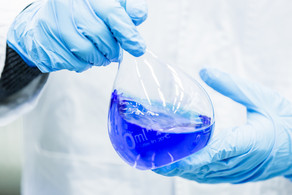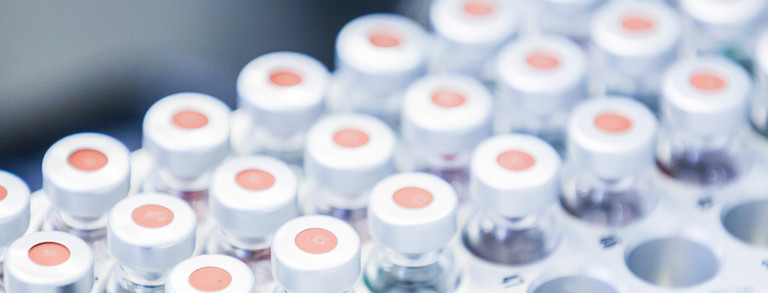Solubilization of Weakly Polar Compounds in Micellar Systems
Aqueous micellar solvent systems are a promising and green alternative to organic solvents in homogeneously catalyzed reactions. Despite the potential of micellar solvent systems as a simple and economic reaction medium, their industrial application is rather sparse. This project focusses on investigating the mechanism of micelle formation as well as the solubilization capacity of micelles towards weakly polar compounds.
Description
Surfactants are amphiphilic molecules that comprises a hydrophilic head and a hydrophobic tail group. If the critical micelle concentration (CMC) is exceeded in an aqueous phase, surfactants self-assemble to micellar structures. These micelles vary in size and shape depending on surfactant concentration and surfactant type. Further, they significantly increase the aqueous solubility of many non-polar compounds. Within this work, binary surfactant/water systems are investigated using light scattering techniques to obtain information about the CMC, size and shape of the aggregates as well as the number of surfactant molecules per micelle. Additionally, the enhanced solubility of water/surfactant systems towards a third weakly polar compound (aldehydes, amines, esters) is determined within this work. The obtained data will lead to a more profound understanding of micellar solvent systems.
References
| [1] | M. Schwarze, J.S. Milano-Brusco, V. Strempel, T. Hamerla, S. Wille, C. Fischer, W. Baumann, W. Arlt and R. Schomäcker: "Rhodium catalyzed hydrogenation reactions in aqueous micellar systems as green solvents" RSC Advances, 2011, 1, 474-483 |
| [2] | F. Gallou, N.A. Isley, A. Ganic, U. Onken and M. Parmentier: "Surfactant technology applied toward an active pharmaceutical ingredient: more than a simple green chemistry advance" Green Chem., 2016, 18, 14 |







